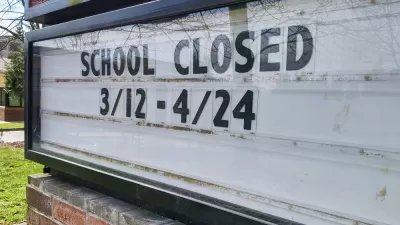The death toll in this rural area 55 miles north of Seattle in Snohomish County is expected to rise. Rain had saturated the ground and led to the collapse of a hillside about 600 feet high and 1,500 feet long. But was the slide foreseeable?
"In a press conference Monday (March 24) evening, Snohomish County Emergency Management Director John Pennington said reports of names of people missing or unaccounted have grown from 108 to 176; he emphasized that many of those names could be duplicates," writes Heather Graf of KING-TV, Seattle-Tacoma, for USA Today.
Graf adds that the "number of missing will probably decline dramatically as people are accounted for. Among the missing: residents, construction workers and people just driving by."
"The situation is very grim," Snohomish County Fire District 21 Chief Travis Hots said, stressing that authorities are still in rescue mode and are holding out hope. But he noted: "We have not found anyone alive on this pile since Saturday."
The Seattle Times raises insightful issues about the inherent instablility of the area and whether housing should have been allowed, indicating that the hillside has a history of slides dating "back more than 60 years. One expert says he was shocked when homebuilding was permitted after a big 2006 slide," write Ken Armstrong, Mike Carter and Mike Baker.
But no language seems more prescient than what appears in a 1999 report filed with the U.S. Army Corps of Engineers, warning of “the potential for a large catastrophic failure.”
In The Wall Street Journal, it is pointed out that rain may not have been the only contributing factor.
While officials cited recent heavy rains in the area as a prime cause of the slide, David Montgomery, a geology professor at the University of Washington in Seattle, said that the geologic make-up of the hillside was also a factor.
"It's a pile of relatively weak glacial debris," he said, referring to its composition, a loose mixture of sand, gravel and stones.
Finally, some have considered the issue of advanced warning. In 2010, Planetizen's Nate Berg pointed to developing technology from Loughborough University in Leicestershire, England that appeared to hold the possibility of providing an early warning system for landslides.
Perhaps it was Washington Gov. Jay Inslee who summed up best the devastation caused by the Highway 530 mudslide after flying over it. "The scope of this is almost unbelievable", he told The Seattle Times.
FULL STORY: 14 dead, 176 missing in Washington landslide

Planetizen Federal Action Tracker
A weekly monitor of how Trump’s orders and actions are impacting planners and planning in America.

Map: Where Senate Republicans Want to Sell Your Public Lands
For public land advocates, the Senate Republicans’ proposal to sell millions of acres of public land in the West is “the biggest fight of their careers.”

Restaurant Patios Were a Pandemic Win — Why Were They so Hard to Keep?
Social distancing requirements and changes in travel patterns prompted cities to pilot new uses for street and sidewalk space. Then it got complicated.

Platform Pilsner: Vancouver Transit Agency Releases... a Beer?
TransLink will receive a portion of every sale of the four-pack.

Toronto Weighs Cheaper Transit, Parking Hikes for Major Events
Special event rates would take effect during large festivals, sports games and concerts to ‘discourage driving, manage congestion and free up space for transit.”

Berlin to Consider Car-Free Zone Larger Than Manhattan
The area bound by the 22-mile Ringbahn would still allow 12 uses of a private automobile per year per person, and several other exemptions.
Urban Design for Planners 1: Software Tools
This six-course series explores essential urban design concepts using open source software and equips planners with the tools they need to participate fully in the urban design process.
Planning for Universal Design
Learn the tools for implementing Universal Design in planning regulations.
Heyer Gruel & Associates PA
JM Goldson LLC
Custer County Colorado
City of Camden Redevelopment Agency
City of Astoria
Transportation Research & Education Center (TREC) at Portland State University
Camden Redevelopment Agency
City of Claremont
Municipality of Princeton (NJ)




























